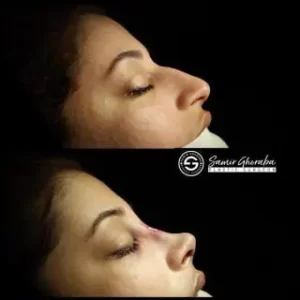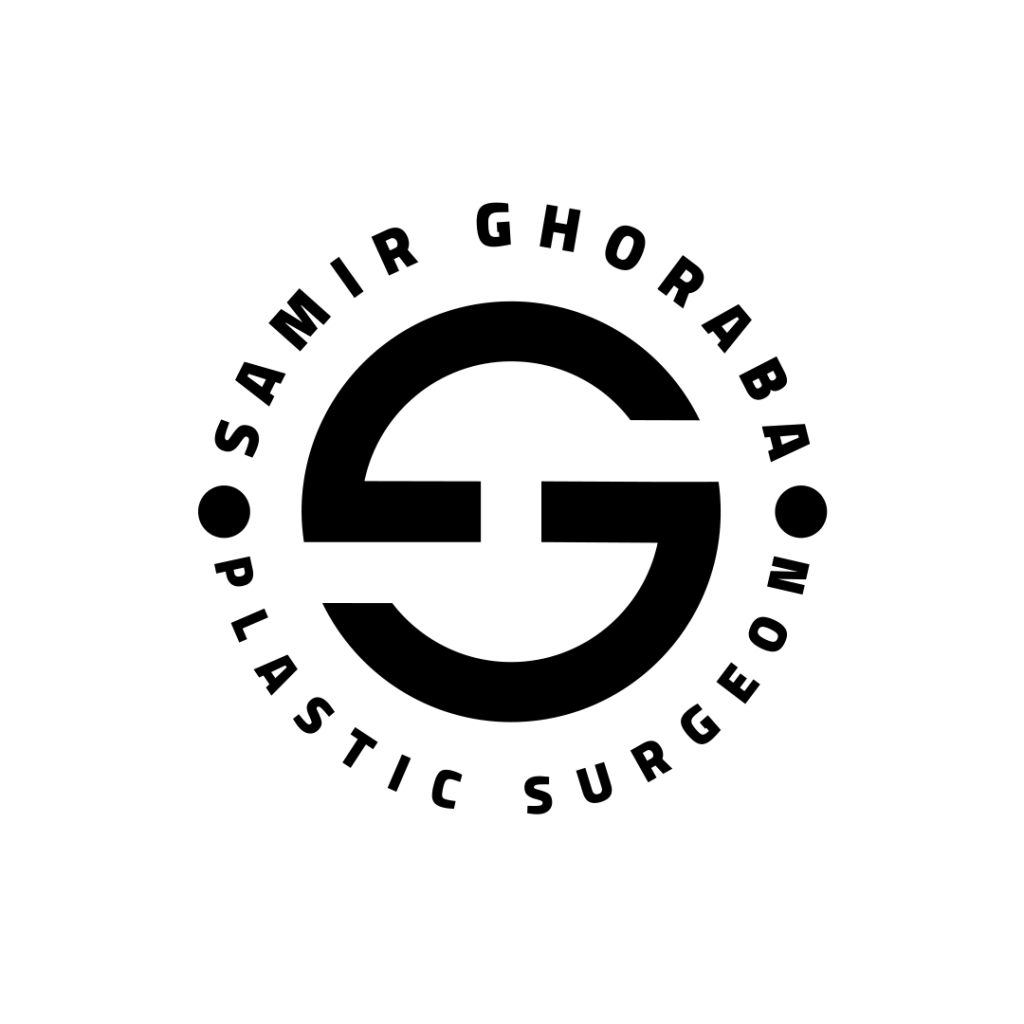An aesthetically pleasing nasal profile that harmonizes with facial features is a significant indicator of facial beauty. In addition to its cosmetic importance, the nose also plays a crucial functional role in respiration and speech. Individuals may experience various nasal issues that compromise both form and function. Conditions such as fractured nasal bones, nasal septum deviations, constricted nasal passages, or asymmetry can negatively impact both the respiratory process and the aesthetic harmony of the face. Despite the historical literary acclaim for nasal beauty, it is imperative to address these issues to restore proper respiratory function and achieve the desired aesthetic appearance. Rhinoplasty serves as a surgical solution to rectify these nasal concerns.
Rhinoplasty methods
At Dr. Samir Ghoraba’s clinics, rhinoplasty and sculpting procedures are conducted with a high level of professionalism, resulting in distinctly favorable outcomes. Dr. Samir Ghoraba has garnered acclaim for successfully executing numerous rhinoplasty and sculpting cases, receiving commendation from both patients and the scientific community. Dr. Ghoraba employs an innovative technique in rhinoplasty by introducing ultrasound for nasal sculpting in Egypt and the Middle East. This advanced surgical methodology ensures a high degree of precision during the procedure, facilitating a brief recovery period with minimal discomfort. Notably, Dr. Samir Ghoraba does not use nasal fillers and possesses expertise in addressing complex cases by utilizing cartilage sourced from the rib cage or ear, tailoring the approach to each unique case. Dr. Samir Ghoraba is a pioneer in facial plastic surgery, particularly in the realm of rhinoplasty.
How is rhinoplasty performed?
Dr. Samir Ghoraba performs rhinoplasty procedures using either the closed or open technique, depending on the specific requirements of each case. The main difference between these methods is the discreet incision beneath the nose, characteristic of the open approach, which leaves no visible traces. The surgical intervention primarily involves modifying nasal cartilage, bones, and the nasal septum to achieve an aesthetically pleasing nasal contour while optimizing respiratory function. Dr. Samir specializes in functional rhinoplasty, addressing both functional issues and refining nasal aesthetics to achieve the desired outcome.
The surgical procedure is conducted under general anesthesia, with an average duration of approximately two hours. Same-day discharge is typical, and an external stent is used for one to two weeks post-surgery. Importantly, Dr. Samir Gharaba does not use fillers during or after the rhinoplasty procedure.
What is nose sculpting using ultrasound?
Nasal sculpting using ultrasound involves the precise manipulation of nasal bones using an ultrasound device. This technology enables the meticulous removal of small bone segments and accurate bone repositioning, minimizing the risk of injury to vital soft tissues such as nerves and blood vessels near the nasal bones. This approach differs from traditional methods used in other surgical centers. The method has several advantages, including unparalleled accuracy in executing surgical steps, ensuring exceptional outcomes while reducing the risk of vascular and neural injuries. Additionally, the use of ultrasound facilitates a faster recovery period with reduced postoperative discomfort. Enhanced bone healing is achieved at an accelerated rate, surpassing the outcomes of conventional surgical approaches.

When is cartilage from the ear or rib cage used?
Dr. Samir Ghoraba selectively uses cartilage harvested from the rib cage or the auricular region, depending on the specific requirements of individual cases, to enhance nasal structural support. Indications for such usage include:
– Revision cases characterized by cartilage loss or overreaction in previous nasal procedures.
– Nasal cases with significantly thick skin that require structural reinforcement to achieve sculpted contours.
– Instances of severe nasal septal deviations.
– Cases involving a snub nose configuration.
Post-rhinoplasty instructions
For optimal recovery after rhinoplasty, follow these instructions:
– Keep your head elevated at a 45-degree angle for the first seven days after the procedure.
– Apply continuous compresses near the nose and under the eyes for the first three days after surgery to reduce swelling. Use crushed ice enclosed in a gauze-covered bag.
– Avoid manipulating or compressing the nose and keep the nasal splint dry.
– Expect
normal postoperative swelling for the first three days, with a significant reduction over the next two to three weeks. Some minor swelling may persist but will gradually resolve within a year.
– Start with a light diet, including warm water and fluids, after surgery. Progress to regular food the day after surgery, avoiding chewable items.
– Watch for potential nosebleeds in the first three to four days after surgery. Be cautious when cleaning the nose to minimize bleeding.
– Avoid strenuous activities, heavy lifting, bending, and sudden movements for three weeks.
– Avoid nose impact, sleeping on your face, and excessive exposure to direct sunlight.
– The nasal cast will be removed 10 days after surgery.
– After
cast removal, avoid wearing glasses or anything resting on the nose for at least two months.
– Sensations of stiffness or numbness in the front of the nose are normal and will gradually resolve as you resume normal activities.
| To see before and after cases, click here |





